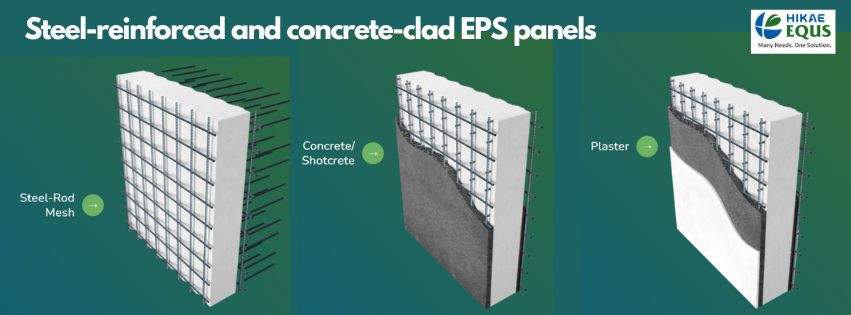In the world of construction, keeping up with new trends is crucial. One innovation that has caught the eye of many is Expanded Polystyrene (EPS) panels. These versatile panels have changed the way we see construction materials. Sandwich EPS panels, a unique building material, have become popular across various industries due to their flexibility and numerous advantages. With a core of Expanded Polystyrene (EPS) sandwiched between two outer layers, these panels offer a range of benefits and are used in various sectors. Let's delve into what EPS panels are, their benefits, how they are used, and introduce you to different sandwich EPS panels.
Understanding EPS Panels:
Expanded Polystyrene panels, also known as EPS panels, are a type of construction material made from expanded polystyrene foam. These panels are created by compressing and heating the foam, resulting in rigid, lightweight sheets with excellent heat transfer resistance and structural rigidity. While they are not strong enough to be used alone for walls, they are combined with other materials to create sturdy wall panels.
Exploring Sandwich Panels:
Sandwich EPS panels, also known as Structural Insulated Panels (SIPs), are composite building materials composed of three layers. The EPS panels form the central core, protected by outer layers of strong material, known as ‘wythes’ or ‘skin layers’. Expanded Polystyrene (EPS) is commonly used as the core due to its excellent insulation properties. These panels are designed to be strong, durable, and versatile, making them popular in modern construction.
Different Types of EPS Panels:
EPS panels come in various types to suit different construction needs. The core provides exceptional thermal insulation, while the facing materials contribute to the panel's structural integrity. These materials also offer surfaces for finishes like paint or cladding. Different facing materials such as Aluminium, OSB, plywood, Fiber concrete, Magnesium oxide (MgO), or Reinforced Concrete have varying properties, impacting factors like fire efficiency and resilience.
Sandwich EPS panels are available in different thicknesses, allowing customization based on specific project requirements. The thickness influences factors like insulation efficiency and load-bearing capacity.
Benefits of EPS Panels in Construction:
1. Superior Insulation: EPS panels excel in insulation, crucial for energy efficiency in construction.
2. Energy Efficiency: EPS panels reduce energy consumption, leading to significant savings in operational costs and aligning with sustainability goals by curbing CO2 emissions.
3. Environmental Friendliness: EPS panels are environmentally friendly, recyclable, and free of harmful substances, contributing to a smaller carbon footprint.
4. Safety Features: EPS panels offer protection against natural disasters like fires and earthquakes, making them a reliable choice for construction projects.
5. Cost-Effectiveness: While initial costs may be slightly higher, EPS panels offer long-term savings through reduced energy consumption, quick installation, and minimal maintenance requirements.
6. Quick Installation: EPS panels are known for their swift and easy installation, making them ideal for projects with tight timelines.
Applications of EPS Panels:
EPS panels are widely used in residential, commercial, cold storage, and industrial construction due to their efficiency, durability, and versatility. They are a top choice for modern construction projects, offering insulation, structural stability, and energy efficiency.






Comments